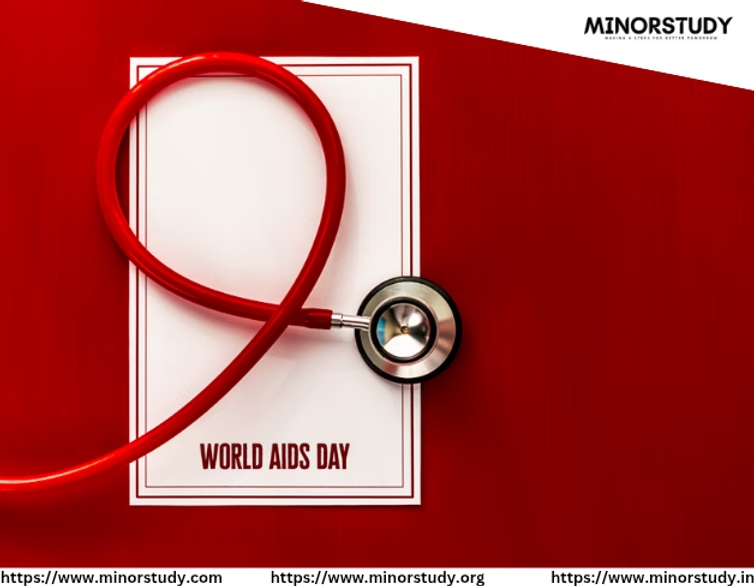🌍 All About World AIDS Day – A Day of Remembrance, Awareness, and Hope
World AIDS Day: Every year on December 1st, the world unites under a red ribbon — the global symbol of solidarity, remembrance, and action in the fight against HIV/AIDS. World AIDS Day is more than just a date on the calendar; it’s a poignant reminder of the lives lost, the stigma faced, and the unwavering fight to end this global epidemic.
- 📜 History of World AIDS Day
- 📅 Timeline of World AIDS Day
- 💡 10 Powerful Facts About HIV/AIDS and World AIDS Day
- ❓ Frequently Asked Questions (FAQs)
- Q1: What is the difference between HIV and AIDS?
- Q2: How is HIV transmitted?
- Q3: Can HIV be cured?
- Q4: Why is World AIDS Day important?
- Q5: What can I do on World AIDS Day?
- 🌍 Significance of World AIDS Day
- 🧍 Human Behaviour and Emotional Connection
- 🎉 How to Observe World AIDS Day
- 💌 Wishing Messages for World AIDS Day
- 📌 Key Points to Remember
- 🧠 Impact of World AIDS Day in Daily Life
- 🧾 Conclusion: From Awareness to Action
In a world still grappling with HIV and its associated stigma, World AIDS Day remains a powerful call to educate, empathize, and eradicate.
📜 History of World AIDS Day
World AIDS Day holds a historic and symbolic place in the global health calendar.
✍️ Key Historical Milestones:
1981 – The first cases of AIDS were reported in the United States.
1987 – The World Health Organization (WHO) launches a global program to combat AIDS.
1988 – December 1 is officially declared World AIDS Day by the United Nations — the first-ever global health day.
1996 – The responsibility for World AIDS Day is taken over by the newly formed UNAIDS (Joint United Nations Programme on HIV/AIDS).
2000s – World AIDS Day themes begin focusing on human rights, access to treatment, and education.
2020s – Emphasis shifts to “Equalize” — ensuring no one is left behind in HIV prevention or care.
📅 Timeline of World AIDS Day
| Year | Event |
|---|---|
| 1981 | First recognized cases of AIDS in the U.S. |
| 1987 | WHO launches global response to HIV/AIDS |
| 1988 | December 1 becomes World AIDS Day |
| 1991 | Red Ribbon adopted as international symbol |
| 1996 | UNAIDS takes over organizing World AIDS Day |
| 2004 | Global HIV cases cross 40 million |
| 2010 | “Universal Access and Human Rights” theme |
| 2020 | Focus on resilience during COVID-19 pandemic |
| 2022 | Global theme “Equalize” urges equity in care |
| 2023 | Over 29.8 million people have access to ART (antiretroviral therapy) |
| 2024 | Increased focus on youth education, gender equality, and community empowerment |
💡 10 Powerful Facts About HIV/AIDS and World AIDS Day
🧬 HIV (Human Immunodeficiency Virus) weakens the immune system by attacking important cells.
❌ There is no cure, but HIV can be managed with lifesaving antiretroviral therapy (ART).
🌐 Over 38 million people globally are living with HIV as of 2024.
🧑🦲 The Red Ribbon symbolizes solidarity with people living with HIV.
🧠 Stigma and misinformation remain one of the biggest barriers to HIV prevention and treatment.
👶 Mother-to-child transmission can be prevented with proper medication.
💊 Early diagnosis and treatment can enable those living with HIV to lead long and healthy lives.
💻 Digital platforms are now powerful tools for HIV education and awareness.
🚺 Women, especially in sub-Saharan Africa, are disproportionately affected due to social inequality.
❤️ HIV is not transmitted through casual contact like hugging, sharing food, or using public toilets.
❓ Frequently Asked Questions (FAQs)
Q1: What is the difference between HIV and AIDS?
A: HIV is a virus that attacks the immune system. If untreated, it can progress to AIDS (Acquired Immunodeficiency Syndrome), a late stage where the immune system is severely compromised.
Q2: How is HIV transmitted?
A: Through unprotected sex, sharing needles, transfusion of infected blood, or from mother to child during childbirth or breastfeeding.
Q3: Can HIV be cured?
A: No permanent cure exists, but antiretroviral therapy (ART) helps manage the virus and live a near-normal life.
Q4: Why is World AIDS Day important?
A: It raises awareness, combats stigma, remembers those lost, and encourages continued investment in treatment and prevention.
Q5: What can I do on World AIDS Day?
A: Wear a red ribbon, attend awareness programs, donate to HIV research, support someone living with HIV, or simply educate yourself and others.
🌍 Significance of World AIDS Day
World AIDS Day is not just about statistics — it’s about people.
🌟 It’s Significant Because:
🧑⚕️ Acknowledges suffering: Millions have died due to AIDS-related illnesses. This day honors their memory.
📚 Spreads awareness: Education helps prevent further spread.
💬 Reduces stigma: Talking about HIV openly can normalize testing and treatment.
👥 Encourages solidarity: It connects communities, policymakers, and organizations to fight together.
💊 Drives action: It reminds global leaders to commit funding and healthcare equity.
🧍 Human Behaviour and Emotional Connection
Behind every statistic is a story — of a young child born HIV-positive, a mother who lost a son, a man denied work due to his status, a teenager afraid to come out.
World AIDS Day humanizes these experiences, urging us to reflect:
Are we judging or supporting those affected?
Do we avoid the topic, or help spread accurate information?
Are we fostering compassionate conversations?
This day is an invitation to act not only with our intellect but with our hearts.
🎉 How to Observe World AIDS Day
Wear a Red Ribbon – A simple yet bold statement of awareness and solidarity.
Organize or Join Events – Marches, panels, online webinars, fundraisers.
Get Tested – Know your status. Encourage others to do the same.
Educate Others – Share facts on social media or talk to friends and family.
Support NGOs – Volunteer or donate to organizations working on HIV/AIDS prevention and care.
Share Stories – Use platforms to highlight experiences of survivors and activists.
Hold a Moment of Silence – Remember those who lost their lives and honor their legacy.
💌 Wishing Messages for World AIDS Day
Sometimes, a few heartfelt words can spark empathy and action. Here are meaningful messages you can share:
❤️ “This World AIDS Day, let’s stand together in love, not judgment. Let’s fight stigma, not people.”
💬 “Awareness is the first step toward change. Talk about HIV. Learn. Listen. Love.”
💪 “On December 1st, we remember the lost, celebrate the fighters, and inspire the next generation to carry the torch of hope.”
🧠 “Knowledge defeats fear. Compassion defeats stigma. Let’s be part of the solution.”
📌 Key Points to Remember
HIV is not a death sentence — with treatment, people can live long, fulfilling lives.
Stigma kills — more than the virus itself. Let’s speak with empathy.
Youth awareness is crucial — prevention begins with education.
Support, not shame — help people open up, not shut down.
Testing is empowerment, not a punishment.
🧠 Impact of World AIDS Day in Daily Life
✅ For Individuals:
Promotes self-awareness, compassion, and health responsibility.
✅ For Families:
Encourages open dialogue about sexual health and emotional support for members affected.
✅ For Workplaces:
Inspires inclusive policies, employee education, and support networks.
✅ For Society:
Pushes for healthcare equity, more research funding, and policy-level change.
🧾 Conclusion: From Awareness to Action
World AIDS Day is not a one-day campaign; it’s a lifelong mission to create a world free from stigma, fear, and inequality. It reminds us of the preciousness of life, the power of information, and the importance of compassion.
When we remember those who died, support those who live, and educate those unaware, we move closer to a future where HIV is not feared but conquered.
So this December 1st, light a candle. Wear a ribbon. Share a story. Take a test. Speak a truth.
Because the fight against HIV is not just medical — it’s emotional, social, and deeply human.








